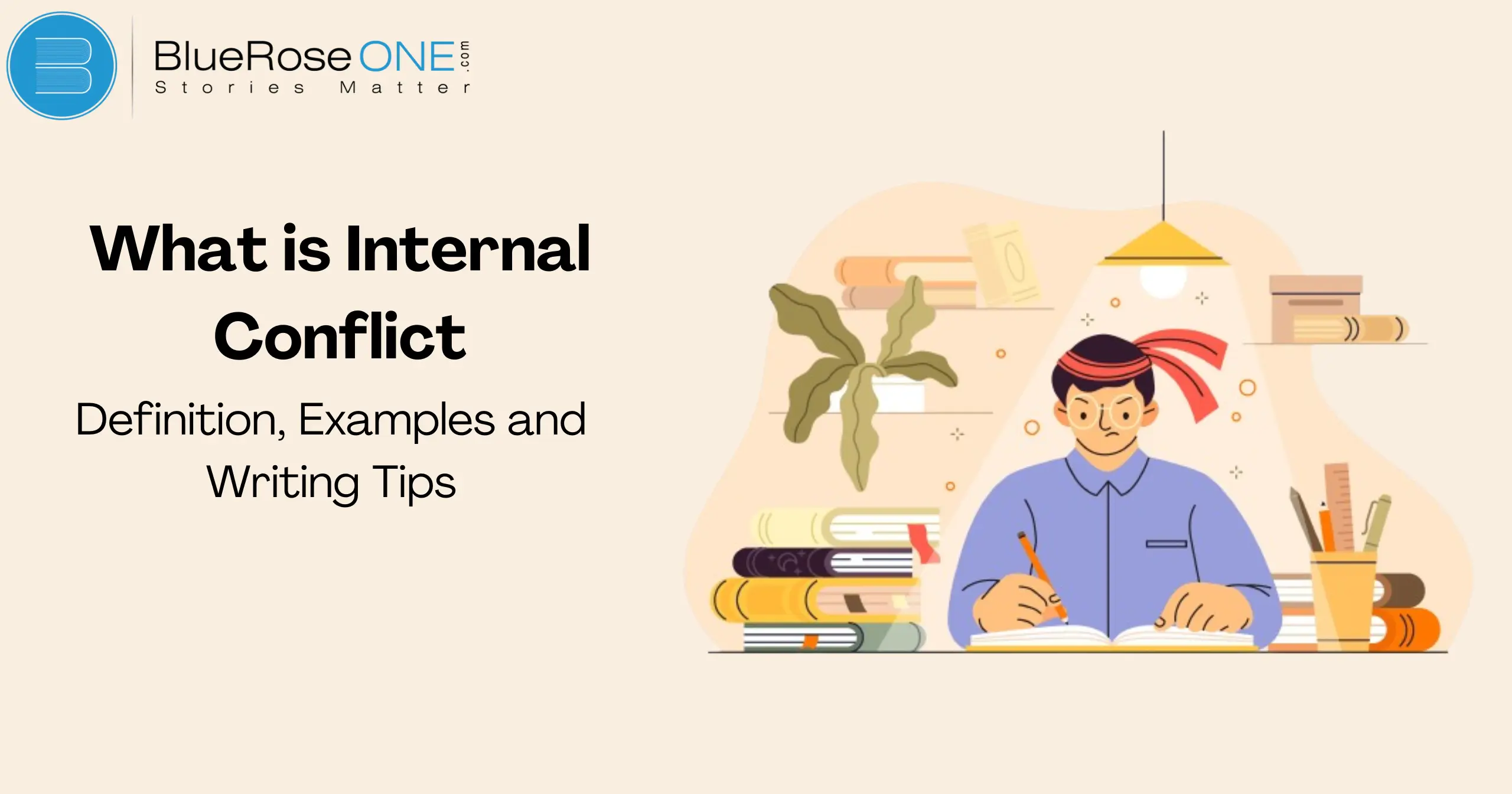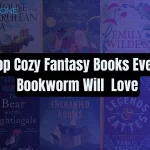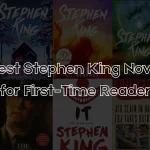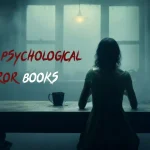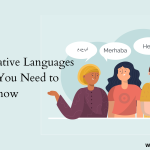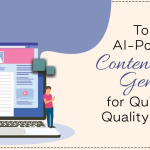What exactly qualifies as a captivating character? Frequently, it’s their internal conflict, the war they are fighting within. Their judgements, behaviors, and eventually, their destiny are shaped by this unseen tug-of-war.
However, what is internal conflict precisely, and why is it so important in narratives? Let’s get started and explore the intricacies of internal conflict, including its various forms, instances, and effective writing techniques.
Internal conflict occurs within a character’s mind, where they struggle with opposing desires, emotions, or beliefs. It’s the quintessential “man vs. self” dilemma, often driving the narrative’s emotional depth.
You may also like: Top Creative Nonfiction Books to Spark Your Imagination
Difference Between Internal and External Conflict
Internal conflict is all about the struggle within the individual, whereas external conflict sets the character against an external force (such as another character, society, or nature). While both are necessary, internal struggle gives people a psychological depth that helps them come across as genuine and approachable.
Types of Internal Conflict
Emotional Conflict
Internal conflict, often known as emotional conflict, is a crucial component of narrative in which characters struggle with their own emotions, wants, or convictions.
Tension and drama are produced when a character experiences this kind of internal conflict. For example, emotional conflict arises when the protagonist is caught between familial obligations and personal goals.
It gives stories more levels of complexity by enhancing character and story dynamics. Internal conflict is a tool used by writers to delve into psychological depths and push their characters towards development or internal resolution.
You may also read: Fatal Flaw: Definition, Types, Examples and More
Moral Conflict
Moral conflict in fiction is a basic kind of internal conflict that revolves around moral choices that characters must make. It happens when a character has to decide between moral imperatives that conflict with one another or between right and wrong.
Characters that engage in this kind of conflict frequently experience mental stress as they struggle with their morals, ethics, and sense of right and wrong.
A protagonist might debate whether to betray a friend for the sake of the greater good, for example, underscoring the difficult decisions that fuel internal conflict in stories.
Intellectual Conflict
An internal conflict in narrative is referred to as “Intellectual Conflict” and occurs when a character must make a decision on ideas, values, or beliefs.
This struggle frequently occurs when the character has to make moral judgements, ethical conundrums, or difficult internal philosophical discussions. Intellectual conflicts, as opposed to emotional or interpersonal ones, center on the struggle with logic and judgment inside oneself.
To illustrate the struggle between social consequences and personal integrity, consider a protagonist who is split between revealing the truth and remaining loyal to a friend. This could lead to intellectual conflict.
You may also like: Plot Twists Vs. Red Herring: Understanding the Difference
Examples of Internal Conflict in Literature
Classic Literature Examples
- Hamlet by William Shakespeare: Hamlet’s indecision and moral dilemmas exemplify internal conflict as he grapples with avenging his father’s death.
- Jane Eyre by Charlotte Brontë: Jane’s struggle between her feelings for Mr. Rochester and her moral convictions highlight deep internal conflict.
Modern Literature Examples
- The Hunger Games by Suzanne Collins: Katniss Everdeen’s internal conflict revolves around survival, loyalty, and her sense of justice.
- Gone Girl by Gillian Flynn: Amy Dunne’s manipulation and Nick Dunne’s guilt showcase complex internal conflicts.
You may also like: Audible Titles vs Physical Books: Which One is Better for you?
How to Identify Internal Conflict in Your Writing
Character Development
Internal conflict in fiction refers to a character’s internal emotional battle, which frequently moves the plot along. The plot gains complexity and suspense when it unveils the character’s inner struggle, misgivings, or moral quandaries.
This kind of conflict is centered on competing decisions, beliefs, or aspirations rather than just outside barriers. An internal conflict might be exemplified, for example, by a protagonist who is divided between pursuing personal goals and being loyal to family.
Writers can enhance character development and establish a strong emotional connection with readers by delving into these internal conflicts.
Plot Progression
Plot progression in storytelling describes how the story’s events evolve and change over time. It’s essential for illustrating internal conflict, in which characters battle with their own feelings, judgements, or convictions.
The conflict advances the plot by giving the characters stress and depth, which draws readers in and enhances the reading experience.
Writers can effectively portray internal conflict by carefully arranging the plot progression. This allows them to showcase the inner challenges that define character development and connect with audiences on a deeper level.
Dialogue and Monologue
Dialogue and monologue are crucial literary devices for expressing internal turmoil. Through dialogue, people converse with one another, letting the reader in on their contradictory feelings, ideas, and intentions.
Through interactions, it enables a dynamic examination of inner turbulence. Conversely, a monologue offers an inside look at a character’s innermost feelings and ideas, providing a better understanding of their challenges and problems.
By offering subtle insights into the intricacies of psychological struggle, these strategies enhance storytelling by generating tension in the story and fostering character growth.
You may also read: Narrative Structure: Definition, Examples and Writing Tips
The Role of Internal Conflict in Character Development
Making Characters Relatable
Internal tension is crucial to developing likable personalities. A character’s internal emotional conflict propels their growth and connects with readers.
Characters experience internal conflict, which adds complexity and tension as they struggle with opposing impulses, beliefs, or feelings. Authors make characters likable and compelling by genuinely depicting these internal conflicts in their characters.
Because they recognise parallels to their own problems and conflicts, readers are able to relate to the characters’ internal struggles. This relationship increases interest in the narrative and makes internal conflict an effective tool for character development.
You may also like: 10 Best Books on Writing Every Aspiring Author Should Read
Driving Character Arcs
Internal conflict is essential to the progression of character arcs in storytelling. It describes the internal psychological conflict that a character has, frequently between their feelings, beliefs, and desires.
Because it influences the character’s decisions and development throughout the story, this conflict is crucial. For instance, a protagonist who is conflicted over whether to follow moral principles or pursue ambition must find a solution in order to grow as a person.
Internal conflict is a tool used by authors to give their characters greater nuance, complexity, and relatability, which increases reader interest and appeal.
You may also like: How to Publish a Book? | Publish Your Book | BlueRoseOne
Internal Conflict and Plot Development
Creating Tension and Suspense
Engaging storytelling requires the use of internal conflict to create tension and suspense. Characters experience internal conflict, which advances the plot by posing questions or causing hardships.
As characters must make difficult choices or reconcile opposing goals, this kind of conflict escalates and draws readers into the story. In J.K. Rowling’s “Harry Potter” series, for instance,
Harry frequently struggles with his identity and decisions, which gives the story more complexity and tension. By deftly incorporating personal tensions that connect with readers’ own hardships and quandaries, authors can elevate their works.
Influencing Plot Twists
Using internal struggle to influence plot twists is a potent storytelling device. Characters’ internal conflict, or their emotional or psychological battle, can powerfully influence the course of a story.
The tension that arises from a character having opposing interests, beliefs, or fears moves the plot along. For example, a protagonist who must choose between personal ambition and family loyalty may make a decision that significantly changes the course of the story.
These plot twists explore the complexities of human nature and decision-making, which keeps readers interested while also advancing character development.
You may also read: Looking for a Professional Book Layout Designer?
Techniques for Writing Internal Conflict
Stream of Consciousness
“Stream of Consciousness” is a writing approach that vividly reveals characters’ internal issues by going deeply into their thoughts and feelings.
It provides readers with an unvarnished and unedited glimpse of the character’s inner turmoil and contradictory emotions by mimicking the natural flow of thoughts, frequently devoid of clear order or punctuation. This method enhances the depiction of internal turmoil by drawing readers inside the character’s mind.
Inner Dialogue
Developing inner discourse is essential to creating internal conflict. This method enhances the narrative depth by illuminating the thoughts, struggles, and feelings of the characters.
Authors create a tangible and realistic internal conflict by depicting their inner agony through dialogue with themselves. This allows authors to convincingly express the emotional tug-of-war.
Symbolism and Metaphor
Metaphor and symbolism are effective literary devices for expressing internal strife. Symbolism is the use of things or elements to symbolize deeper meanings; for example, inner turmoil is symbolized by a storm.
Metaphors, such as comparing opposing emotions to a battlefield, use direct comparisons to draw attention to the emotional struggle that exists within a character. These methods enhance stories by accurately capturing difficult internal conflicts.
You may also like: How Much Will it Cost to publish a Book in India?
Conclusion
Internal conflict is the heartbeat of character-driven stories. It adds depth, relatability, and emotional resonance, making characters unforgettable and narratives compelling. By understanding and skillfully incorporating internal conflict, you can create stories that captivate and move your readers.

